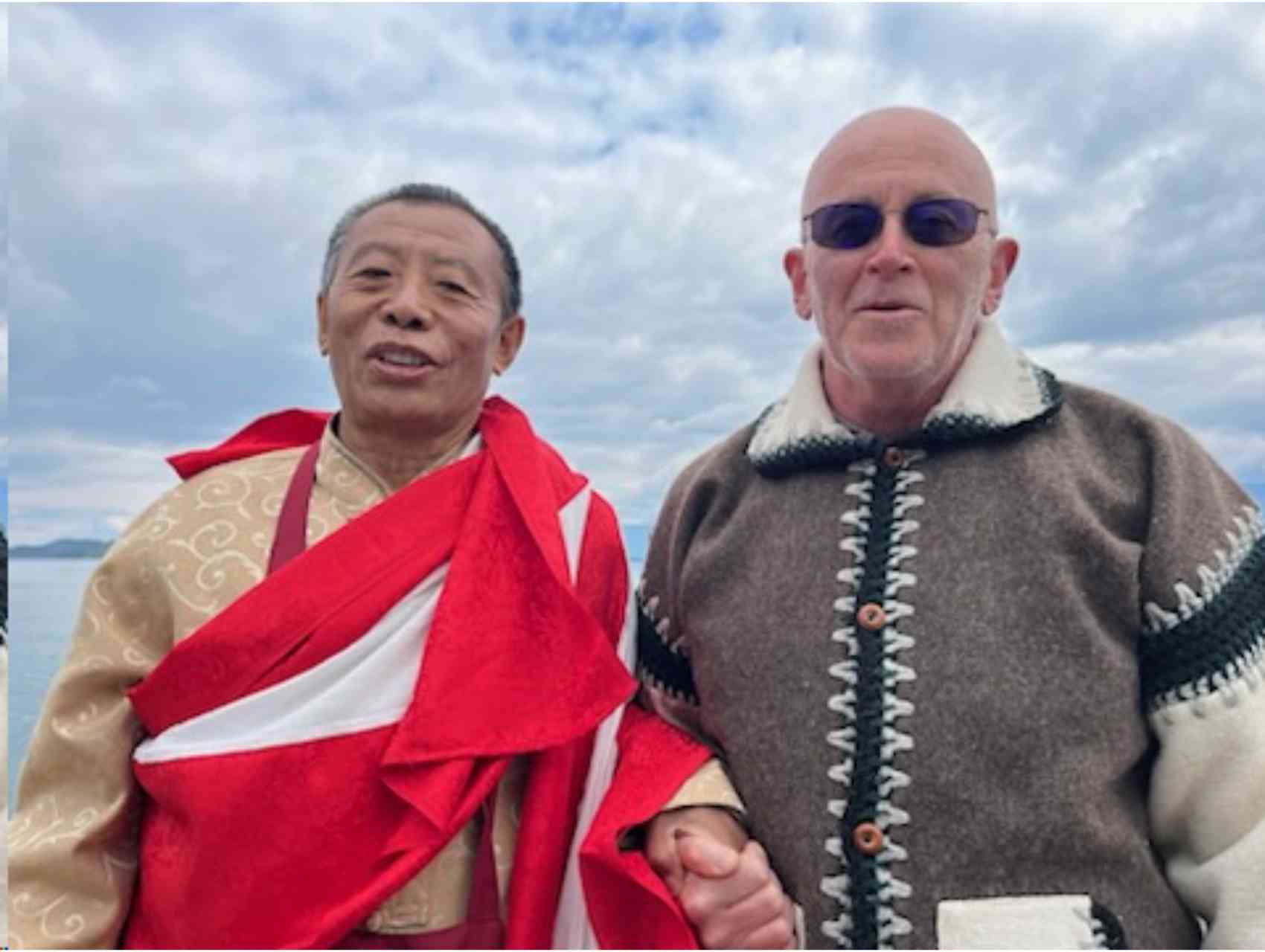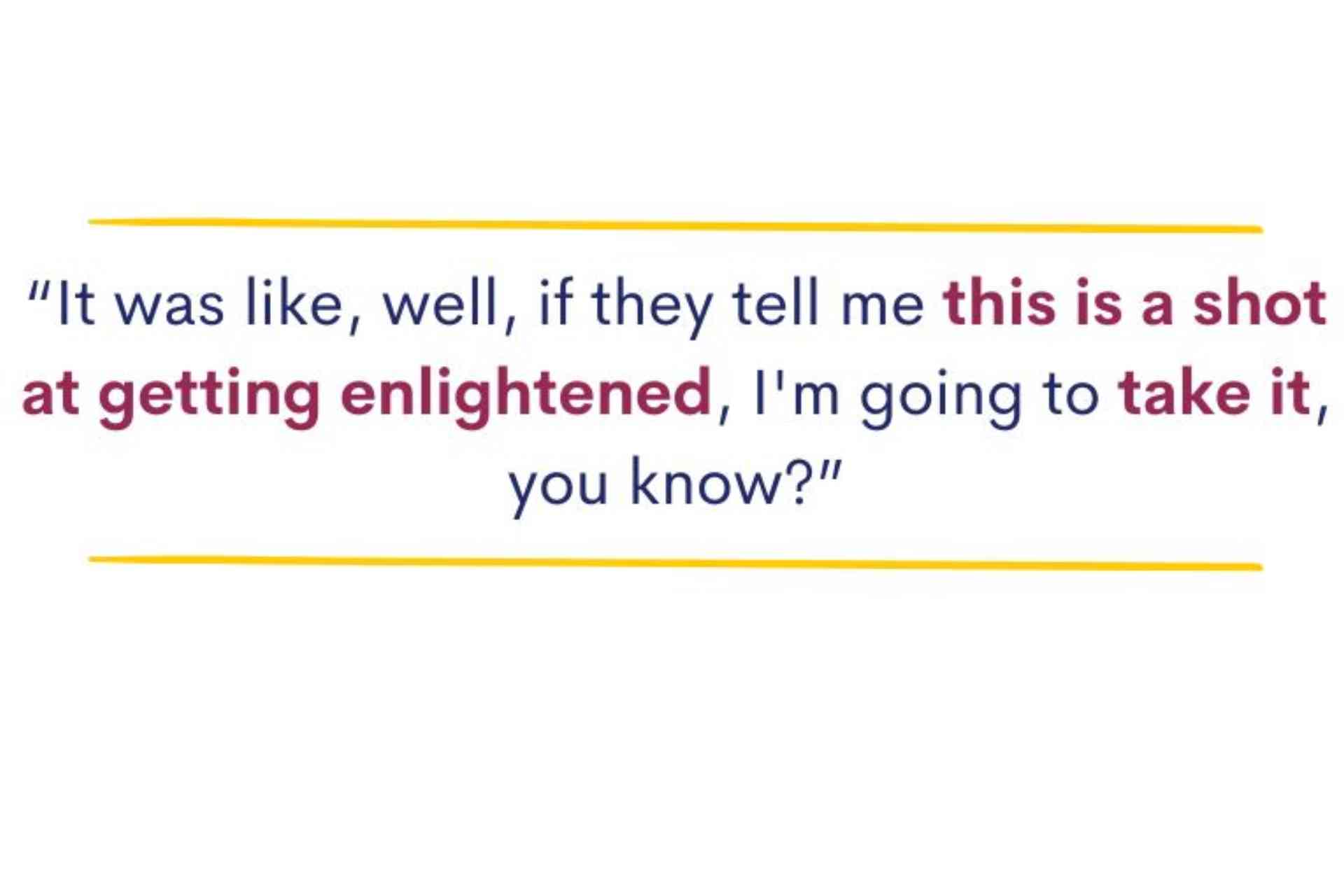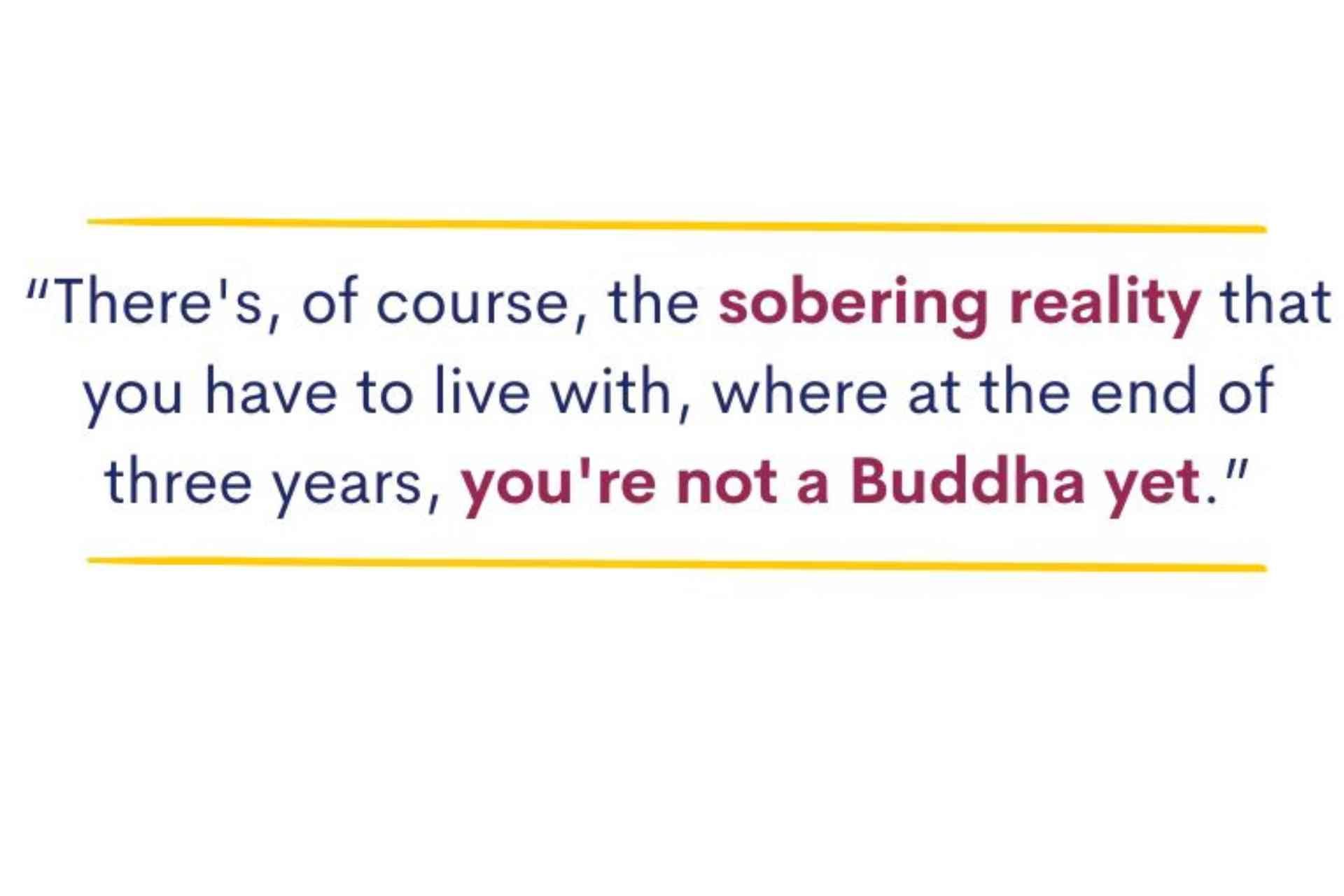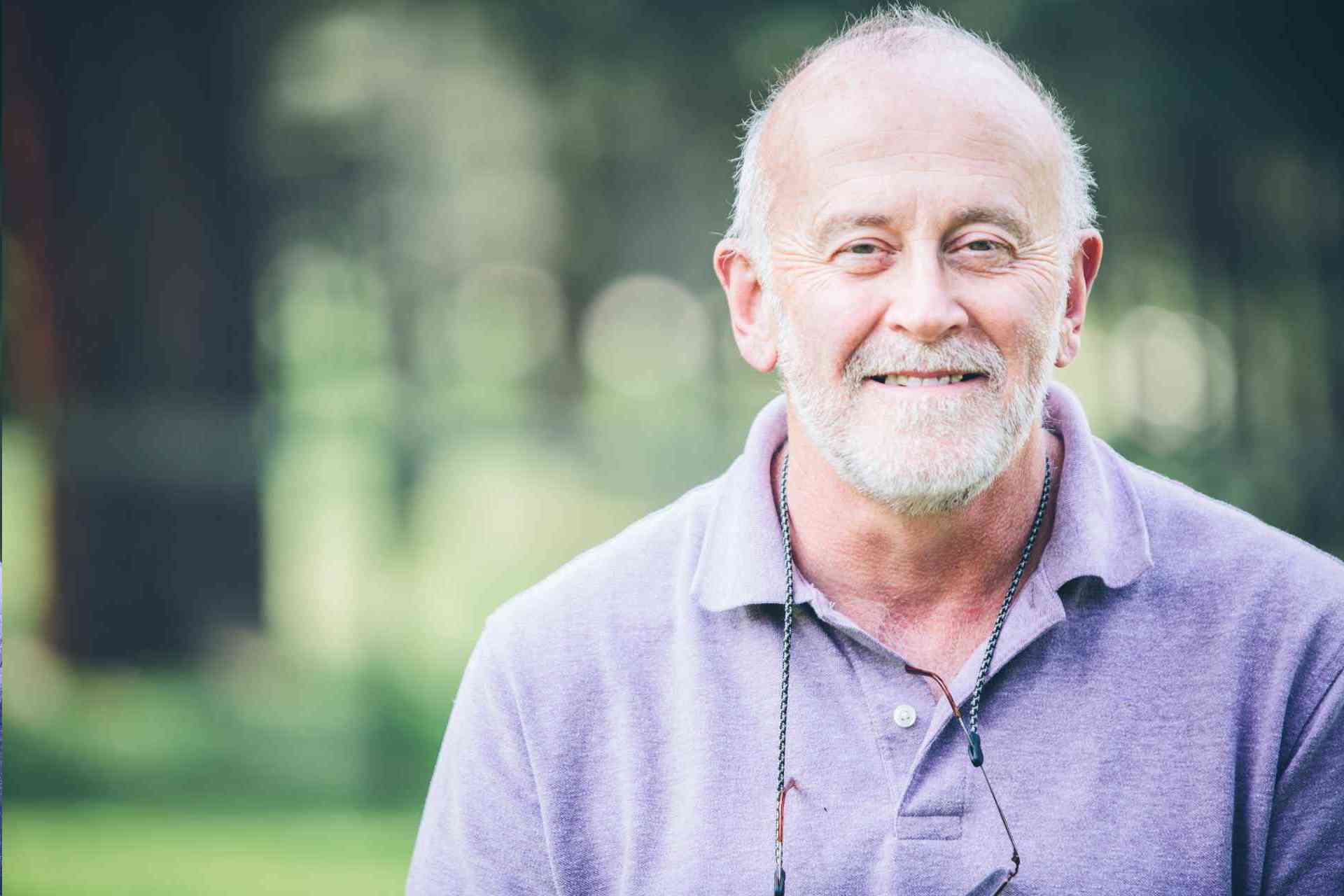Take a look behind the scenes at Namchak, Tibetan Buddhism, and the people entrusted with the teachings of the Namchak lineage in this new series, “Well-Acquainted with Wisdom.” This first installment features a discussion between Tibetan Translator Chökyi and Amanda Taylor, Digital Content Curator at the Namchak Foundation. They explore his life’s work as a translator and the role a three-year retreat played in his life. Namchak’s translation team consists of four Tibetan translators whose mission is to translate the teachings of the Namchak lineage so that practitioners can access all the material they need, both the practices and the commentaries that explain them. In addition to fostering the translation of sacred texts by a team of highly qualified translators like Chökyi, the Namchak Retreat Ranch will open its Three-Year Retreat Center in 2025.
If you ever get the opportunity to sit down with a Tibetan Buddhist translator and scholar whose dedication to the Buddhist path took him around the world, I highly recommend it. I recently sat down with Richard Barron, a/k/a Chökyi, one of the Namchak Foundation’s first Tibetan translators, for an enlightening conversation about his career and his experience of a three-year retreat.
“If we go back in the mists of time, I was in my teens when I started university. I skipped a few classes,” he says with a grin. Vancouver, Canada, was “the San Francisco of Canada” in the Sixties. Flowing with youthful waves of interest in Eastern religions, every street corner was occupied by a different spiritual group.
Perhaps it was written on the wall that Richard would later become Chökyi, Tibetan Buddhist scholar and translator. He started university younger than most, double majored in Religious and Asian Studies, and spent his free periods at the library studying everything from Arabic to Japanese. After a few years of college, he dropped out to follow his spiritual interests, which he reports was “a very fashionable thing to do back then.”

Richard Barron, a/k/a Chökyi (pronounced chook ee),
Namchak translator and Tibetan Buddhist scholar
What drew you to Buddhism?
Freed from the constraints of a college course load, he started exploring meditation groups and one evening found a postcard-sized notice that a Tibetan lama was sharing teachings in the area. Eventually, he went to one of those teachings and was surprised to find another Canadian translating the talk and speaking Tibetan. This was long before we could learn anything imaginable via YouTube. Richard searched the library for resources and found a book on Tibetan English grammar written by a German missionary in the 1800s. He was not allowed to take it out of the library because it was in mint condition. He spent hours studying the Tibetan alphabet and teaching himself the scripts.
He found himself listening to a talk by Kalu Rinpoche, in which the lama said that it was very important for people who were young and interested to learn Tibetan because there was a slew of teachings that needed to be translated. Richard’s ears perked up with that, and he thought, “Well, that’s something I’d like to do.”
As he dove into Tibetan language studies, it was a natural transition to join a Tibetan Buddhist Sangha, and so began his lifelong practice and dedication to the dharma.
Born Richard Barron, he received the full name of Karma Chökyi Nyima at 17, when he took refuge with the lama running Kalu Rinpoche’s center in Vancouver, Canada. “Karma” is affixed to the names of all who take refuge in the Karma Kagyü tradition. “Chökyi” means “of Dharma,” and Nyima means “sun,” so his name means “Sun of Dharma.” Because he was such an eager and enthusiastic student, people started calling him Chökyi for short. Today, at age 71, he’s still known as Chökyi (pronounced chook ee).
How do you know that you’re ready for a three-year retreat?
Kalu Rinpoche, Chökyi’s teacher, presented a three-year retreat as an ideal goal for serious practitioners to immerse themselves in the practices of his lineage.

Chökyi and Tulku Sangak Rinpoche*, Namchak’s Spiritual Director. * Sometimes spelled “Sang-Ngag”
Retreat is considered a normal and worthy undertaking in Tibetan culture. In Tibetan, the word for retreat is tsam, which means a boundary. The idea is that when we’re in tsam, there’s a boundary around us. We’re focused inward on our practice. To take this further, the Tibetan word for three-year retreat is lo-sum chok-sum, which means “three years and three fortnights.” This type of retreat is also standard in Tibetan culture. For Westerners, being in retreat for three years can be challenging to wrap our minds around. Here’s some helpful Tibetan context:
Given the number of times we breathe in and out every day, there’s a connection between our breathing and the subtle energy that moves through our energy channels. When our minds are in a particular state of meditation, when we breathe, the energy being reinforced is not ordinary karmic energy. That energy becomes wisdom or an awareness that is encouraged by breathing.
The tantra states that the minimum amount of time that a human being could achieve full enlightenment by transforming all of that subtle energy from karmic energy to the energy of that wisdom or awareness is, guess what? Three years and three fortnights.
How long were you meditating before you considered a three-year retreat?
Chökyi’s imagination lit up with the idea of a three-year retreat, as he wanted to learn everything he could about Tibetan Buddhism. After four years of practicing and completing the preliminary practices, he set his sights on a three-year retreat.
From late 1976 to early 1980, Chökyi completed his three-year retreat at a facility in France. He reported being quite young (24 years old) when he began his retreat.
“I think the advantage of being young is you’ve got lots of energy and physical stamina to do a challenging thing like a three-year retreat. On the other hand, I didn’t have that much life experience. It probably would have been better to have been mellowed out in middle age to go into it. But who knows if I would have even wanted to at that point. So for me, it was just being in the appropriate place at the appropriate time.”
Why did you do a three-year retreat?
When asked about his motivation for a three-year retreat, he replied, “I don’t think any of us went into the retreat thinking, ‘I’m going to become a teacher’ or ‘I’m going to become a translator’ or something like that. It was ‘I want to become a Buddha.’ I mean, it was that idealistic.
It was like, well, if they tell me this is a shot at getting enlightened, I’m going to take it, you know?”

What do you learn at a three-year retreat?
There isn’t a unified curriculum for a three-year retreat. The curriculum and practices vary across schools and lineages of Buddhism. Chökyi said, “In my particular background, Kalu Rinpoche was not only a Karma Kagyü Lama, but he was also the holder of a less-known lineage, which is called the Shangpa Kagyü, and that has its own set of practices and meditations and so forth. We did a hybrid of the Karma Kagyü and the Shangpa Kagyü schools.”
There’s something to be said for devoting the majority of one’s energy to some form of spiritual discipline for that length of time. A three-year retreat is designed to give participants the maximum opportunity with minimal distractions to devote themselves to different spiritual practices within each school and lineage.
What does a typical day look like on a three-year retreat?
Regarding the daily routine, they were meant to get up at four in the morning. Chökyi shared that he did not always succeed at the 4 a.m. wake-up; lack of sleep was one of the most significant challenges in his retreat. Not all retreats have a 4 a.m. wake-up. Surprisingly, Chökyi and the other participants were so eager and excited about their retreat that they chose the 4 a.m. wake-up. Not surprisingly, one of his tips for a three-year retreat is to create a realistic daily schedule.
What are the rules for silence during retreat?
After that bright and early wake-up, during a given day, there were four two-and-a-half-hour practice sessions and various group rituals. The practice sessions were mainly completed alone, but there weren’t rules against practicing with a few other people. They were encouraged to minimize talking during the retreat, but there wasn’t a strict code of silence. They communicated when necessary.
“I think one of the things you learn in a three-year retreat is that meditation has far more connotations than sitting quietly watching your breath,” Chökyi said.
One of the primary purposes of a three-year retreat is to expose participants to the entire range of techniques offered by that school. Chökyi added, “There are all kinds of more complex visualizations, use of mantra, yogic exercises, so by the end, regardless of how well you did and how much you accomplished spiritually, you were at least exposed to and had some training in all those techniques.”
Their practices varied from month to month or week to week, depending upon the schedule. Chökyi said, “The goalposts were constantly shifting a bit because just when you felt familiar with one practice, a new one would come along, which you had to get used to. But the whole point, you see, was to give you that exposure over that period of time.”
Back then, a majority of the texts were still in Tibetan. Very few texts had been translated into English, so one of the prerequisites for his retreat was to know Tibetan. While he had a basic understanding of Tibetan, there was still a learning curve for fully comprehending all Tibetan texts and teachings. As he states, there was a good deal of “learning on the job. I could see that while that’s no guarantee that anybody’s going to do better spiritually just because they know Tibetan, on a practical level, it made it easier to access the texts and the practices.”
As part of Namchak’s translation team, Chökyi noted that the benefit of doing a three-year retreat at the Namchak Retreat Ranch will be that everything is translated. “There will be the opportunity to practice in Tibetan with the phonetic system, and there’ll be the option to do it in English. That’ll make it so much easier for people because there isn’t that hurdle of learning Tibetan to benefit.
What was life like after the three-year retreat?
When asked about his life after the three-year retreat, he chuckled and said, “There’s, of course, the sobering reality that you have to live with, where at the end of three years, you’re not a Buddha yet.”
He embraced that reality and hit the ground running after his retreat. “I didn’t want to become a spiritual teacher. I wanted to become a Buddha. That didn’t happen. So, my teacher said, ‘Okay, fallback plan. I want you to travel with me. And then, at a certain point, I’ll send you back to Vancouver.’” Chökyi spent nearly three years traveling around the world and translating teachings with Kalu Rinpoche before returning to Vancouver.


Chökyi doing what he does best: translating at a retreat with the translation team.
What did you gain from your three-year retreat?
The point of a three-year retreat is not that it’s a career move, but that is what it became for Chökyi. Over time, he shifted from teaching meditation and leading ceremonies to a full-time career in Tibetan translation, saying,
“I don’t really think of myself as a teacher these days. I’m a translator. That’s what I do best.”
“I probably could have learned to be a translator without doing the three-year retreat, but I think it certainly lit a fire under me because I really wanted to be able to access these practices in these texts we were working with and understand what my teachers were saying to me directly without having to find somebody to interpret for me.”
On a personal level, his three-year retreat taught him a lot about practice: what effective practice is and what it isn’t. And nearly 50 years later, he says,
“That’s something I continue to work on these days–making sure that it’s all quality time. If I’m practicing, it’s quality time. Even when I’m not practicing, it should be quality time.”
Do you have any advice for someone considering a three-year retreat?
While reflecting on his three-year retreat experience, Chökyi summarized these tips for anyone considering a three-year retreat:
- Do your best to stay healthy. Chökyi became very ill in the first month of his retreat, which of course, added undesirable complications.
- Do a three-year retreat with a qualified teacher.
- Keep your body limber. While there is a great deal of sitting, don’t underestimate how physically challenging it is to sit for at least 10 hours daily.
- Work with your teacher to establish daily schedules and avoid choosing a 4 a.m. wake-up time. 😉
- Carefully plan your finances so you don’t spend time worrying about how to keep paying for your retreat.
- Minimize distractions from the outside world. Make clear boundaries with your friends and family so that they understand your goals.

When asked if he would do it again, he smiled and replied,
“I never looked back. At the age of 71, I’ve never doubted that choice.”
